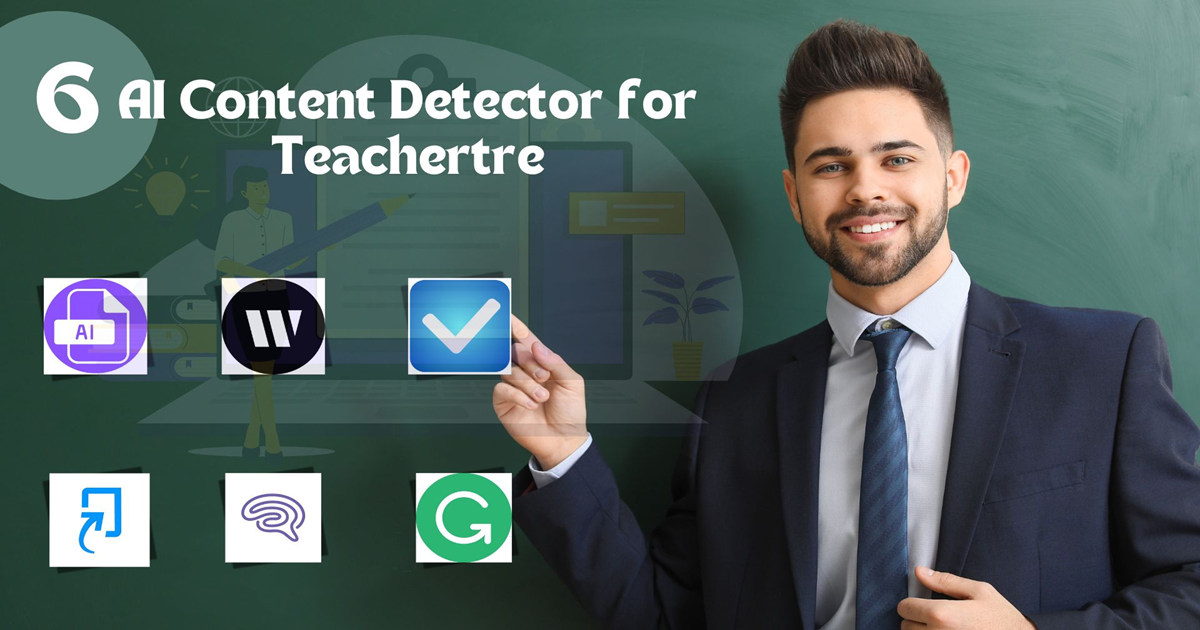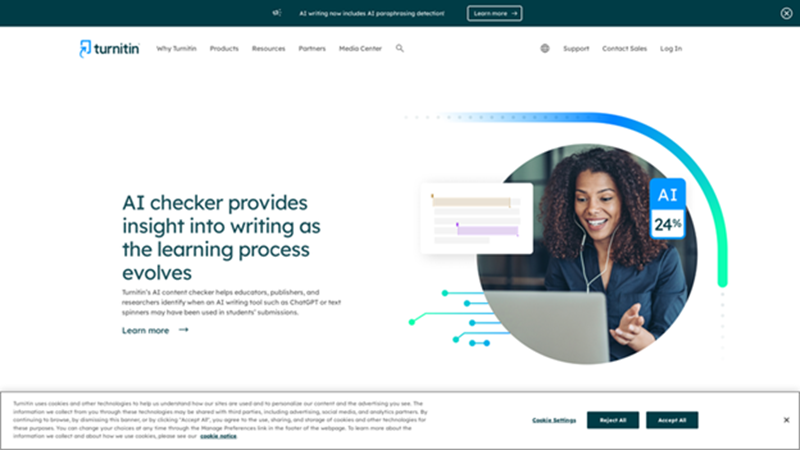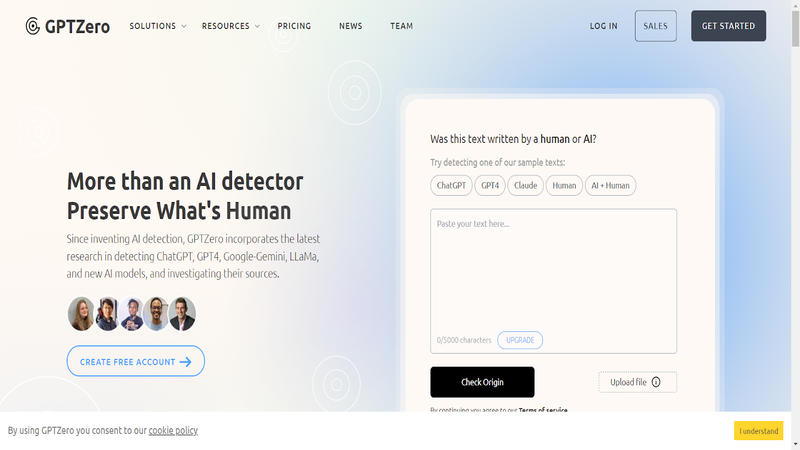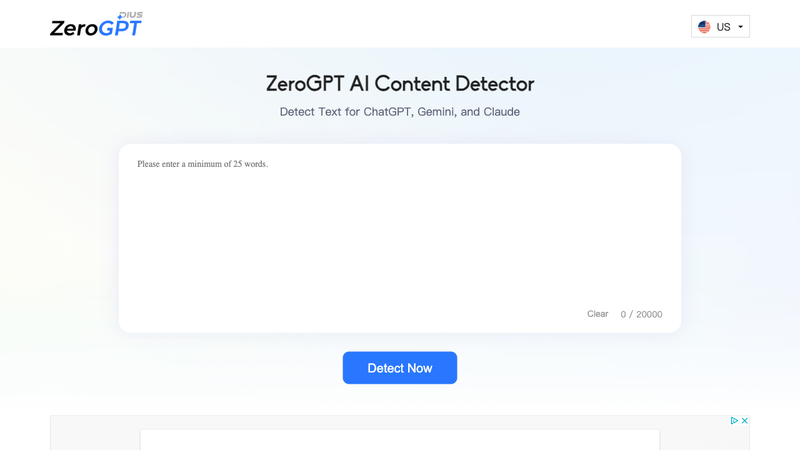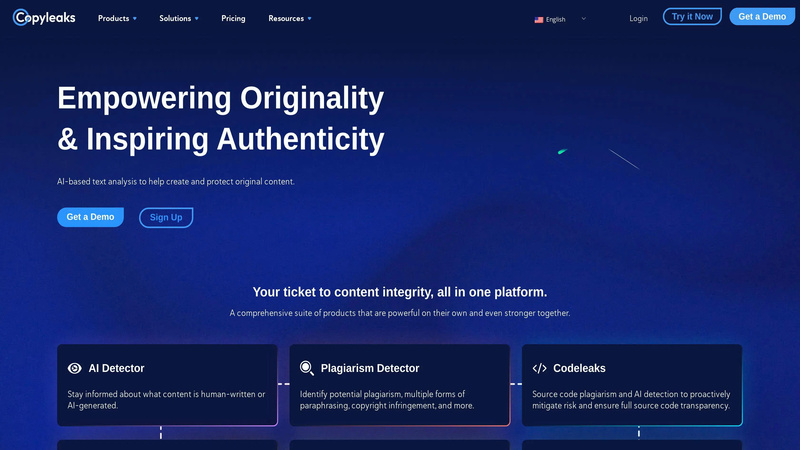AI Content Detection is changing the way classrooms work. This whole tutorial will show teachers how to find AI-generated work, apply detection tools, and encourage honest learning.
Artificial intelligence has quickly revolutionised the way students study, write, and interact with information. These technologies can be quite helpful, but they also make things harder by making it harder to find AI material. This difficulty isn’t simply technical for teachers; it’s also very important for academic honesty, fair grading, and good teaching. In this article, we’ll talk about how teachers can tell if something was made by AI, what tools are out there, and how to encourage real learning in a world where AI is used.
What is the process of AI content detection?
AI Content Detection is the method of finding text that was probably created by AI models. Students are using these models, like ChatGPT and other big language models, more and more for homework, essays, and discussion postings.
Many students utilise these resources in a fair way, but some might use them to make work without giving credit where credit is due. Because of this, teachers now have to tell the difference between writing by real people and writing by AI.
Why AI Content Detection is Important in Schools
AI in schools is like the use of calculators in maths class or spell-checkers in writing class. But language models can do the work of writing instead of tools that help. This is why teachers need AI content detection:
1. Keeping Academic Integrity
Plagiarism rules were first made for situations where people copy and paste. AI can now make whole essays from scratch, which means that standard plagiarism detectors can’t find them. If students use AI to cheat on their work, it hurts the learning process.
2. Making sure skills grow
Writing isn’t about putting words on a page. It’s about putting your thoughts in order, making your case, and sharing your own point of view. Students miss out on learning these important abilities if they let AI do the writing.
3 Grades that are fair
Teachers should grade pupils based on how hard they work. AI content that isn’t found can make grading unfair, especially in classes where writing is a big part of how well students do.
How Do AI Tools That Find AI Work?
Most AI content detection techniques look for patterns in text that are common in writing that was made by a machine. These are:
- Perplexity and burstiness: People tend to choose words and structure sentences in ways that aren’t always the same, while AI-generated language is more consistent.
- Predictability: AI often uses word combinations that are easier to guess.
- Token analysis: Some programs look at how likely it is that a certain word will show up in a certain sequence. AI is frequently more predictable.
Some well-known AI content detection tools are:
Name of the tool, features, and price
- GPTZero was made just for teachers. Paid/Free
- Turnitin AI works with plagiarism detection. Sign Up
- Copyleaks AI tests for plagiarism and AI. Winston: Free Trial/Paid AI focusses on using it for education Paid
- ZeroGPT Easy to use and understand Free
Every tool has its pros and cons. Tools aren’t perfect, but when utilised correctly, they can provide you a helpful signal, not proof.
Signs of AI-Generated Content Without a Tool
A teacher’s gut feeling is sometimes more reliable than any algorithm. These are some small clues that a student might have used AI:
1. Language that is too polished
Even in early versions, AI usually creates material that is free of grammar mistakes. If a kid generally makes mistakes when they write but then turns in a great essay, that’s a sign that something is wrong.
2. Arguments that aren’t clear
AI can copy structure, but it has trouble with depth. Be on the lookout for essays that sound like they were written by a machine, don’t have a personal voice, or keep repeating the same ideas without moving forward.
3. Not having personal experience
If AI writes essays that call for an opinion, personal reflection, or real-life examples, they could look impersonal.
4. Changes in style all of a sudden
A student might write the introduction or conclusion by hand but use AI to write the body paragraphs. Tone that doesn’t match up is often a sign.
How teachers may deal with AI content detection
Finding anything is only half the battle. Teachers also need plans for how to stop things from happening, how to deal with them, and how to change. Here’s how to deal with it in a positive way.
1. Be open with your students
Talk about AI tools in a clear way. Let pupils know you are aware of them and explain your policies in detail. Promoting ethical behaviour makes things clearer and develops trust.
2. Change the way assignments are given
It’s tougher for AI to mimic prompts that ask for critical thinking, personal connection, or insights that are special to the classroom. Some examples are:
- “Talk about a class discussion that made you change your mind.”
- “Think about a mistake you made when you wrote your first draft.”
3. Use AI to Learn
Instead than forbidding AI completely, show pupils how to use it to help them learn:
- Coming up with ideas
- Checking grammar
- Writing new sentences that make sense
Set limits. Make sure your students know the difference between using AI to help them learn and utilising AI to take the place of learning.
4. Use both detection and dialogue
- If you think someone is using AI, ask them, “Can you walk me through how you wrote this paragraph?”
- “What sources did you use to back up this claim?”
- A short conversation can sometimes show if a student really understands what they wrote.
What AI Content Detection Can’t Do
No method of detection is 100% reliable. Tools can show false positives (marking human writing as AI) or false negatives (missing AI material). That’s why you shouldn’t take findings as proof; you should see them as a beginning point.
Risks of Relying Too Much:
- Damaged trust: Blaming kids based only on a tool’s result can backfire.
- Unreliable judgements: Different instruments could give you different answers.
- Legal and moral issues: Schools need to be careful not to punish pupils unfairly if there isn’t clear proof.
Encouraging a culture of originality
A solid classroom atmosphere based on honesty and learning is the greatest way to protect against dishonest AI use.
Promote learning through processes
Have students turn in more than one draft or indicate how they planned their work. It’s tougher to depend on AI shortcuts when you have portfolios, reflection logs, and peer feedback sessions.
Reward Voice and Openness
Allow room for innovation, taking chances, and not being perfect. Students are less prone to outsource their thinking when they feel safe saying what they think.
Use AI in the Classroom—Together
Use AI tools in your courses. Find out how they make text, what they don’t do well, and how students can tell if machine-written content is good or bad.
Things to Think About Legally and Politically When Detecting AI Content
Changes to School Policy
Schools should change their rules on academic honesty to incorporate rules about AI. Explain what is unethical use and what is okay help.
Talking to Parents
Parents might not know about these tools. Telling them how AI is changing education encourages them to work together and help each other at home.
Privacy of Students: Tools that upload student work to servers outside of the school may generate privacy concerns. Make sure you always follow data protection rules like FERPA or GDPR.
The Future of AI Content Detection in Education: What to Expect
Detection will grow difficult as AI gets better. In the future, tools may be able to mix AI and human writing so well that no one can tell the difference. In such case, the ideals of education, the ethos of the classroom, and interactions between people will be more important than ever. This is what could be coming up:
- Classroom tools that keep track of the writing process from draft to final
- AI watermarking or hidden tags added by AI systems
- Teacher-AI collaborations where both human and machine comments are utilised to grade
The future isn’t just about catching liars. It’s about showing pupils how to think critically in a world with AI.
A Fair Way to Find AI Content
AI content detection isn’t only about watching people; it’s also about helping them. Teachers are not detectives; they are there to help. Teachers may confidently navigate this new frontier by remaining informed, changing their lessons, and keeping lines of communication open.
Instead of being afraid of AI, teachers can accept it, as long as they set limits, follow the rules, and are clear about what they mean.
To stay updated on the latest AI developments and tool reviews, follow us on our social media channels:
- Blog: https://aitoolsbiz.com/my-blog
- YouTube: https://youtube.com/@AItoolsbiz
- Twitter: https://x.com/AItoolsbiz
- LinkedIn: https://www.linkedin.com/in/aitoolsbiz

